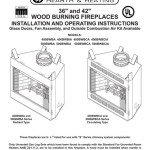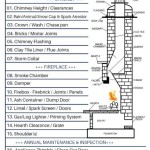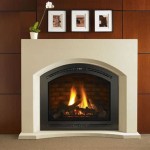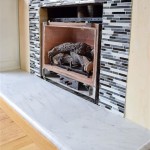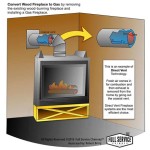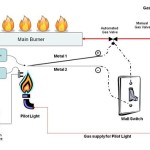Before and After: Fireplace Transformations That Inspire
Fireplaces have long served as focal points within homes, providing warmth and ambiance. However, over time, fireplaces can become outdated, damaged, or simply fail to complement the overall aesthetic of a space. A fireplace renovation can dramatically alter the look and feel of a room, breathing new life into an existing structure and transforming it into a stunning centerpiece. The "before and after" of a fireplace remodel showcases the potential for revitalization and serves as a powerful illustration of the impact strategic design choices can have on interior spaces.
Successful fireplace transformations involve careful planning, material selection, and skilled execution. The process frequently begins with a thorough assessment of the existing fireplace, identifying its strengths and weaknesses, and understanding the architectural style of the home. This evaluation informs the design direction and ensures the renovation is cohesive with the overall aesthetic. The subsequent stages can involve anything from simple cosmetic updates to complete structural overhauls, depending on the desired outcome and the condition of the existing fireplace.
Key Point 1: Assessing the "Before" - Identifying Problems and Opportunities
The initial phase of any fireplace transformation centers on a comprehensive assessment of the existing structure. This goes beyond simply noting the visual appearance and delves into the functional aspects and potential safety concerns. A qualified professional should inspect the firebox, chimney, and surrounding materials for signs of damage, wear, and tear. Common issues encountered in older fireplaces include cracked firebricks, deteriorating mortar, and faulty dampers. Furthermore, an outdated or inefficient fireplace can contribute to heat loss and decreased energy efficiency.
Beyond identifying problems, assessing the "before" also involves recognizing opportunities. Consider the architectural style of the home and how the existing fireplace either complements or detracts from it. The existing dimensions of the fireplace and surrounding area can dictate the scope of the renovation. For example, a small, underwhelming fireplace might benefit from an extended hearth or a more prominent mantel. Conversely, an overly large and imposing fireplace might need to be scaled down to better suit the proportions of the room. The goal is to identify the potential for improvement and develop a design plan that maximizes the impact of the transformation.
Material considerations also play a crucial role in the "before" assessment. The existing material palette—brick, stone, tile, or wood—influences the choice of new materials. The new design should either harmonize with the existing elements or introduce a contrasting element that creates visual interest. Furthermore, the existing materials can provide clues about the original design intent and inform decisions about whether to maintain or depart from that aesthetic.
Finally, safety regulations and building codes must be considered during the initial assessment. Fireplaces are subject to stringent safety standards to prevent fires and carbon monoxide poisoning. Any renovation must adhere to these codes, which may dictate specific material choices, construction techniques, and ventilation requirements. A qualified contractor can ensure that the finished fireplace is both aesthetically pleasing and compliant with all applicable regulations.
Key Point 2: Defining the "After" - Design and Material Selection
Once the "before" has been thoroughly assessed, the next step is to define the desired "after." This involves developing a detailed design plan that outlines the proposed changes, material selections, and overall aesthetic. The design plan should take into account the homeowner's preferences, the architectural style of the home, and any budget constraints. The plan should be visually represented using sketches, renderings, or 3D models to provide a clear understanding of the final result.
Material selection is a critical aspect of the design process. The choice of materials can dramatically impact the look and feel of the fireplace. Common materials used in fireplace renovations include brick, stone, tile, wood, and metal. Each material offers unique aesthetic qualities and functional properties. For example, brick provides a classic, traditional look, while stone offers a more rustic and natural appearance. Tile can be used to create intricate patterns and add pops of color, while wood provides warmth and texture.
The mantel is another key element of the fireplace design. The mantel serves as a focal point and provides a surface for displaying decorative items. Mantels can be made from a variety of materials, including wood, stone, and metal. The style of the mantel should complement the overall design of the fireplace and the architectural style of the home. A simple, minimalist mantel might be appropriate for a modern space, while an ornate, carved mantel might be better suited for a traditional setting.
The firebox itself can also be upgraded during a fireplace renovation. Options include replacing the existing firebox with a more efficient model, installing a fireplace insert, or converting the fireplace to gas or electric. These upgrades can improve the energy efficiency of the fireplace and make it easier to use. A qualified technician can advise on the best options based on the homeowner's needs and the existing infrastructure.
Lighting is frequently an overlooked aspect of fireplace design. Incorporating strategically placed lighting can enhance the visual appeal of the fireplace and create a more inviting atmosphere. Options include recessed lighting above the fireplace, spotlights to highlight decorative elements, and sconces flanking the fireplace. The lighting should be carefully chosen to complement the overall design and create the desired ambiance.
Key Point 3: The Transformation Process - Execution and Challenges
The execution phase of a fireplace renovation involves bringing the design plan to life. This typically involves hiring a qualified contractor to perform the necessary demolition, construction, and finishing work. The contractor should have experience with fireplace renovations and be familiar with all applicable building codes and safety regulations. The transformation process can be complex and may involve unforeseen challenges, so it's essential to work with a contractor who is skilled at problem-solving and communication.
Demolition is often the first step in the transformation process. This involves removing the existing fireplace surround, mantel, and any other elements that are being replaced. Demolition can be a messy and disruptive process, so it's important to take precautions to protect the surrounding areas. The contractor should use dust barriers and floor coverings to minimize the spread of debris. Furthermore, any hazardous materials, such as asbestos, must be handled and disposed of properly.
Construction involves building the new fireplace surround, installing the mantel, and making any necessary structural changes. This requires skilled carpentry, masonry, and tile work. The contractor should use high-quality materials and follow industry best practices to ensure the finished fireplace is durable and aesthetically pleasing. Proper ventilation and insulation are also crucial to ensure the fireplace functions safely and efficiently.
Finishing involves painting, staining, sealing, and adding any decorative elements. This is where the details come together to create the final look. The contractor should pay close attention to the finishing details to ensure a professional and polished result. This may include applying multiple coats of paint, carefully sealing any cracks or gaps, and installing decorative trim or molding.
Common challenges encountered during fireplace renovations include unexpected structural issues, material shortages, and budget overruns. It's important to have a contingency plan in place to address these challenges. The contractor should communicate regularly with the homeowner and provide updates on the progress of the project. Flexibility and adaptability are essential to successfully navigate the transformation process and achieve the desired "after" result.
A significant consideration during the transformation is the proper disposal of debris and waste materials. Responsible contractors prioritize environmentally friendly practices and ensure that demolition materials are recycled or disposed of in accordance with local regulations. This minimizes the environmental impact of the renovation and contributes to a more sustainable construction process.
The duration of a fireplace renovation can vary depending on the scope of the project and the complexity of the design. A simple cosmetic update might take only a few days, while a complete structural overhaul could take several weeks. The contractor should provide a realistic timeline upfront and keep the homeowner informed of any delays or changes. Effective communication and project management are key to ensuring the renovation is completed on time and within budget.
In conclusion, fireplace transformations offer a compelling opportunity to revitalize living spaces and enhance the aesthetic appeal of homes. By carefully assessing the "before," defining a clear vision for the "after," and executing the transformation with skill and precision, homeowners can create stunning focal points that add value and enjoyment to their homes.

10 Fireplace Makeover Ideas Before And After Regency

Fireplace Makeover Before And After Sweet Tooth Life

Before And After Photos Full Service Chimney

Fireplace Update Before Afters Luce S Chimney Stove

Modern Farmhouse Fireplace Makeover Before After Fueling Mamahood

Fireplace Update Before Afters Luce S Chimney Stove

47 Stellar Diy Fireplace Remodel Makeover Ideas Remodelaholic

Fireplace Makeover Before After The Inspired Room

Stacked Stone Fireplace Before After A Thoughtful Place

Modern Fireplace Makeover Momma From Scratch

